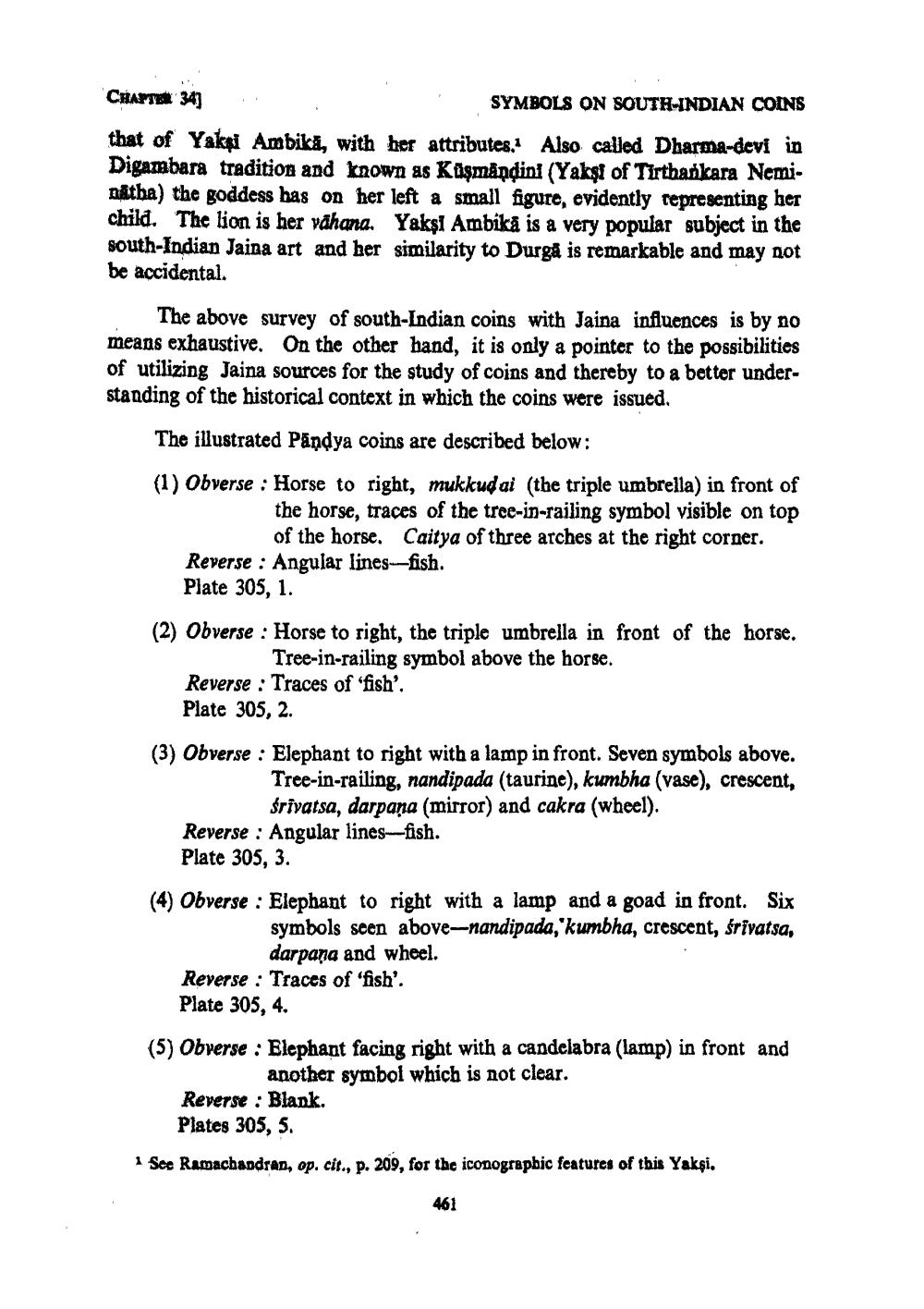________________
CHAPTER 34]
SYMBOLS ON SOUTH INDIAN COINS that of Yakni Ambika, with her attributes. Also called Dharma-devi in Digambara tradition and known as Kosmåndini (Yakst of Tirthankara Neminatha) the goddess has on her left a small figure, evidently representing her child. The lion is her vahana. Yaksi Ambika is a very popular subject in the south-Indian Jaina art and her similarity to Durgå is remarkable and may not be accidental.
The above survey of south-Indian coins with Jaina influences is by no means exhaustive. On the other hand, it is only a pointer to the possibilities of utilizing Jaina sources for the study of coins and thereby to a better understanding of the historical context in which the coins were issued.
The illustrated Pandya coins are described below:
(1) Obverse : Horse to right, mukkudai (the triple umbrella) in front of
the horse, traces of the tree-in-railing symbol visible on top
of the horse. Caitya of three arches at the right corner. Reverse : Angular lines--fish.
Plate 305, 1. (2) Obverse : Horse to right, the triple umbrella in front of the horse.
Tree-in-railing symbol above the horse. Reverse : Traces of fish'. Plate 305, 2.
Platese: Angular list. Caitya of the Worailing symh
(3) Obverse : Elephant to right with a lamp in front. Seven symbols above.
Tree-in-railing, nandipada (taurine), kumbha (vase), crescent,
þrivatsa, darpana (mirror) and cakra (wheel). Reverse : Angular lines-fish. Plate 305, 3.
(4) Obverse : Elephant to right with a lamp and a goad in front. Six
symbols seen above--nandipada,'kumbha, crescent, srivatsa,
darpana and wheel. Reverse : Traces of "fish'. Plate 305, 4.
(5) Obverse : Elephant facing right with a candelabra (lamp) in front and
another symbol which is not clear. Reverse : Blank. Plates 305, S.
See Ramachandran, op. cit., p. 209, for the iconographic features of this Yakşi.
461




